From dinosaur-vibes to glow-up courtship moves, these birds aren’t just odd—they’re perfectly adapted. Use this guide to learn what makes each species so unforgettable, where they live, and the quirky behaviors you can actually watch for in the wild or on videos.

Region Central & South America (lowland forests)
Why it looks unreal A huge, round mouth, lid-heavy eyes, and bark-colored plumage let it “vanish” on a broken branch.
Spotlight behavior At dusk it perches bolt-upright and freezes, opening that wide mouth to snap up large insects and the occasional small bat. By day it becomes a “stump,” even swaying with the wind to sell the disguise.
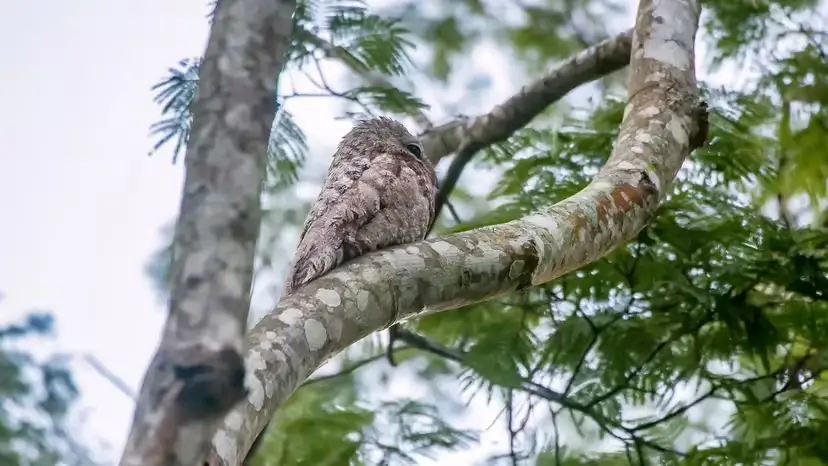
Region New Zealand
Why it looks unreal A moss-green, owl-like parrot that can’t fly—and can outweigh a housecat.
Spotlight behavior Males carve out “display bowls” and boom through the night with sub-bass calls that travel for kilometers. It’s a classic example of lek mating: females visit, judge the performance, then leave.

Region Tropical oceans worldwide
Why it looks unreal Needle-thin wings, a scissor tail, and males with a giant red throat pouch they inflate like a balloon.
Spotlight behavior Masters of the updraft, they can stay aloft for days, snatching aquarium/flying-fish.html">flying fish off the surface and sometimes harassing other seabirds to drop their catch.
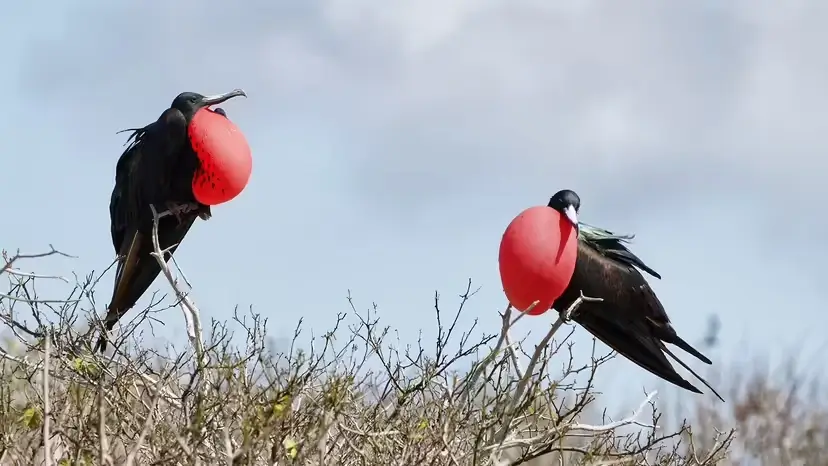
Region Central-East African marshes
Why it looks unreal A dinosaur-grade silhouette capped by a massive clog-shaped bill with a hooked tip.
Spotlight behavior The birds stand statue-still, then launch a lightning lunge to grab lungfish, eels—even small crocodiles. Their slow, deliberate head-bobbing helps gauge distance before the strike.
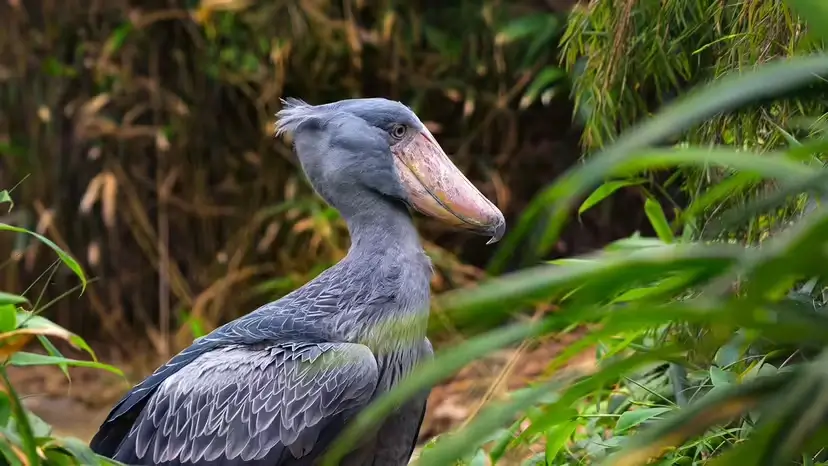
Region New Zealand forest and scrub
Why it looks unreal Tiny wings, powerful legs, and a long bill with nostrils at the tip—rare among birds.
Spotlight behavior Nocturnal scent-hunters that probe leaf litter for worms and beetle grubs. Females lay a huge egg relative to body size; pairs can defend territories together for years.
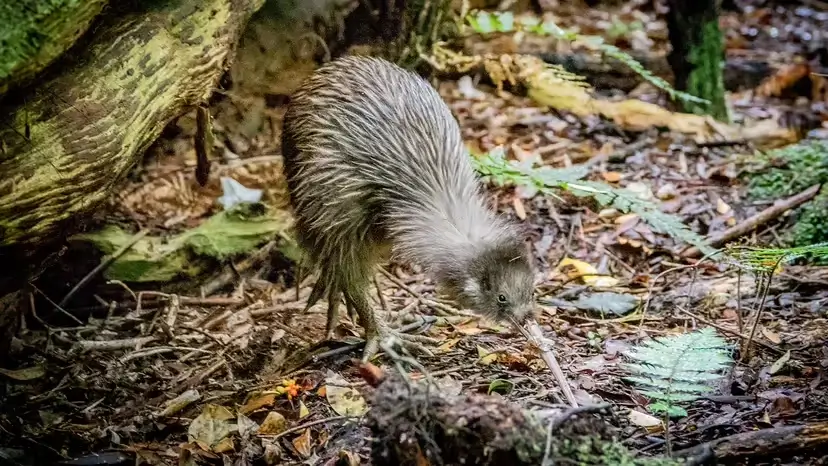
Region Northern South America (Guiana Shield)
Why it looks unreal Neon-orange plumage and a semi-circular head crest that looks drawn with a vector tool.
Spotlight behavior Males clear “dance floors” in the understory and perform fast pivots, wing flicks, and bowing displays. Females pick a winner, then do all nest-building and chick-rearing.
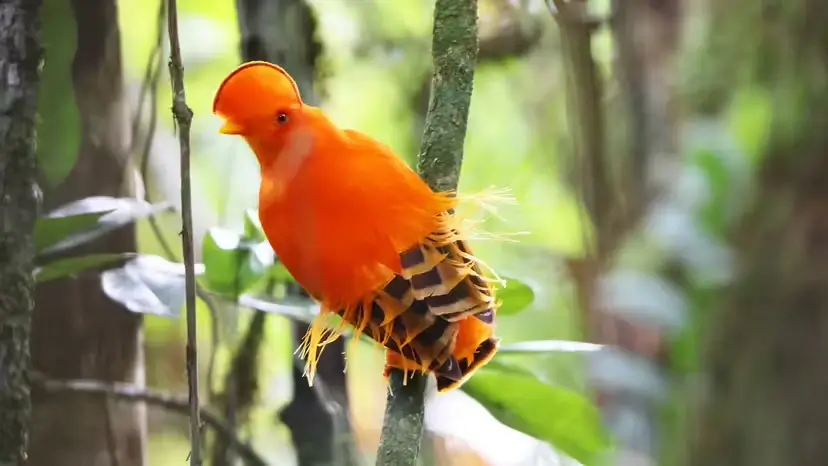
Region Northern South America & Trinidad
Why it looks unreal A night-flying, fruit-eating cave dweller that echolocates with audible clicks.
Spotlight behavior Roosts in large, noisy colonies deep in caves; forages at night on oily palm and laurel fruits, storing fat for long flights. The clicks help them thread through pitch-black cave passages.
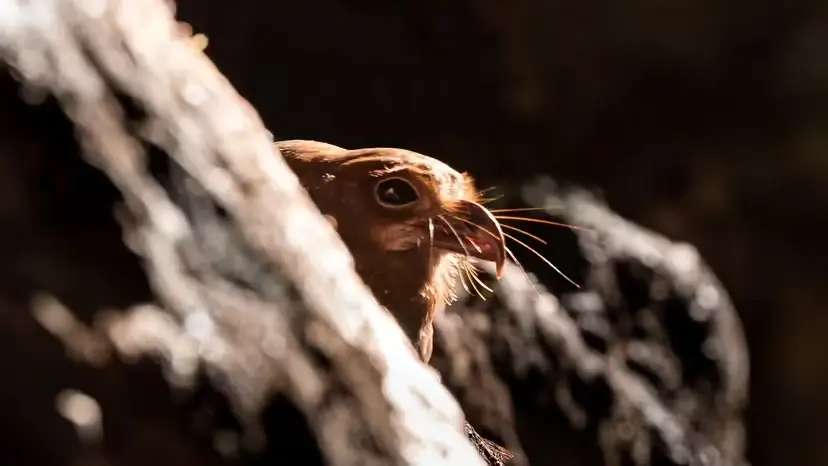
Region Eastern Pacific, especially the Galápagos
Why it looks unreal Oversized turquoise feet and a comic-cool high-step.
Spotlight behavior Courtship is all about those feet—males lift and present them in a jaunty dance, offering nest gifts while whistling. At sea they plunge-dive like arrows after schooling fish.
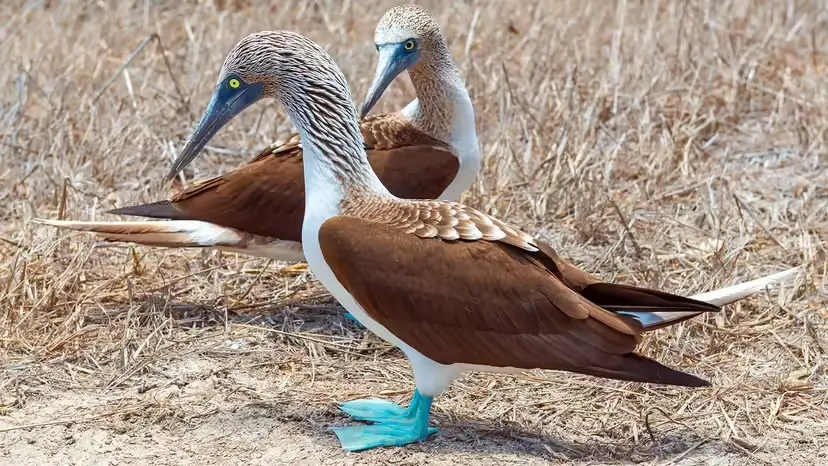
Region Amazon & Orinoco wetlands
Why it looks unreal Spiky crest, bulky crop, and a leaf-fermenting gut that gives a barnyard aroma—hence “stink bird.”
Spotlight behavior Chicks hatch with tiny wing claws and can clamber through branches; if threatened, they drop into water and scramble back up. Adults digest leaves with foregut fermentation, more like cows than songbirds.
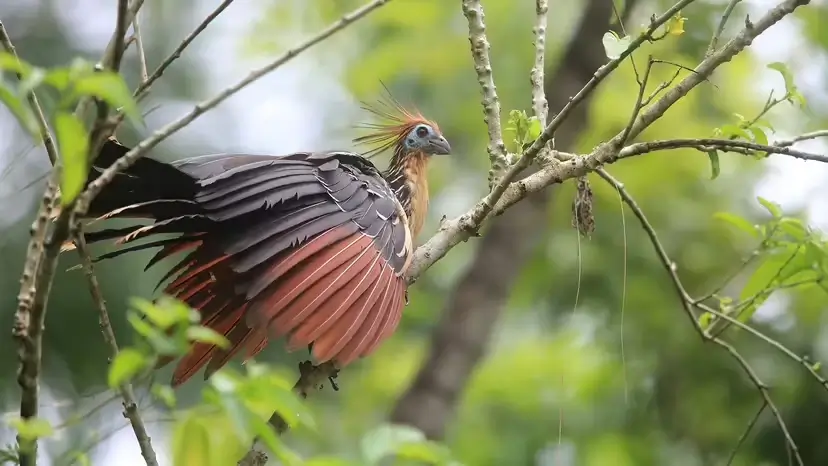
Region Sub-Saharan African savannas
Why it looks unreal A crane-tall raptor with dramatic head plumes and eyeliner-bold facial skin.
Spotlight behavior Hunts on foot, stomping snakes and lizards with crushing kicks. Long legs keep vital organs high above striking range; pairs patrol huge grassland territories.
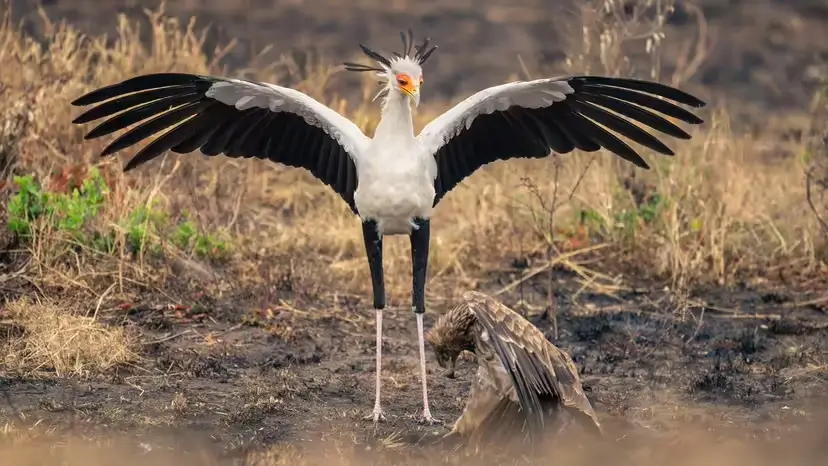
Look for function behind the flair. Inflatable pouches amplify sound; mega bills grip slippery prey; blue feet signal health; odd noses sniff out food.
Watch at the right time. Many displays peak at dawn/dusk or in breeding season; several species are strictly nocturnal.
Mind the habitat. From mangrove edges to papaya-rich gardens or open marsh, the setting explains the look.
Bottom line: Their cartoonish charisma isn’t a gimmick—it’s evolution’s way of solving real-world problems in unforgettable style.
animal tags: weird birds
We created this article in conjunction with AI technology, then made sure it was fact-checked and edited by a Animals Top editor.